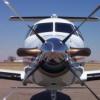
Sign in to follow this
Followers
0

GUIDE: Correct use of PC-12 Autopilot (KMC321/KAC297)
By
~Craig~, in PC12 FSX | P3D


By
~Craig~, in PC12 FSX | P3D